The U.S. State Department has approved the sale of F-35 fighter jets, MQ-9 unmanned aircraft and various types of weaponry to the United Arab Emirates.
The authorisation notices are displayed below, not however that this is simply authorisation for a sale and not a sale itself.
F-35:
“The State Department has made a determination approving a possible Foreign Military Sale to the Government of the United Arab Emirates of F-35 Joint Strike Fighters and related equipment for an estimated cost of $10.4 billion. The Defense Security Cooperation Agency delivered the required certification notifying Congress of this possible sale today.
The Government of the United Arab Emirates (UAE) has requested to buy up to fifty (50) F-35A Joint Strike Fighter Conventional Take-Off and Landing (CTOL) aircraft and fifty-four (54) Pratt & Whitney F-135 Engines (up to 50 installed and 4 spares). Also included are Electronic Warfare Systems; Command, Control, Communications, Computer and Intelligence/Communications, Navigational, and Identification (C4I/CNI); Autonomic Logistics Global Support System (ALGS); Operational Data Integrated Network (ODIN); Air System Training Devices; Weapons Employment Capability and other Subsystems, Features, and Capabilities; F-35 unique chaff and infrared flares; reprogramming center access; F-35 Performance Based Logistics; software development/integration; aircraft ferry and tanker support; aircraft and munitions support and test equipment; communications equipment; provisioning, spares and repair parts; weapons repair and return support; personnel training and training equipment; weapon systems software, publications and technical documents; U.S. Government and contractor engineering, technical, and logistics support services; and other related elements of logistical and program support. The total estimated cost is $10.4 billion.
This proposed sale will support the foreign policy and national security of the United States by helping to improve the security of an important regional partner. The UAE has been, and continues to be, a vital U.S. partner for political stability and economic progress in the Middle East.
The proposed sale of F-35s will provide the Government of the UAE with a credible defense capability to deter aggression in the region and ensure interoperability with U.S. forces. The UAE has demonstrated a commitment to modernizing its military and will have no difficulty absorbing these aircraft into their armed forces.”
MQ-9B:
“The State Department has made a determination approving a possible Foreign Military Sale to the Government of the United Arab Emirates of MQ-9B Remotely Piloted Aircraft and related equipment for an estimated cost of $2.97 billion. The Defense Security Cooperation Agency delivered the required certification notifying Congress of this possible sale today.
The Government of the United Arab Emirates (UAE) has requested to buy up to eighteen (18) Weapons-Ready MQ-9B, Remotely Piloted Aircraft; twenty-five (25) Raytheon Multi-Spectral Targeting Systems-D (MTS-D) EO/IR Sensors; nineteen (19) Lynx AN/APY-8 Synthetic Aperture Radars (SAR) with Ground Moving Target Indicator (GTMI); eighteen (18) RIOTM Communication Intelligence Systems; sixty-six (66) Embedded Global Positioning System/Inertial Navigations Systems (EGI) with Selective Availability Anti-Spoofing Modules (SAASMs); five hundred fifteen (515) AGM-114R Hellfire Missiles; twelve (12) KMU-572 Joint Direct Attack Munitions (JDAM) Tail Kits for 500LB Bombs; four (4) MXU-650 Airfoil Groups for 500LB Paveway II GBU-12; seven (7) MXU-1006 Airfoil Groups for 250LB Paveway II GBU-58; eleven (11) MAU-169 or MAU-209 Computer Control Groups (CCGs) for 250LB/500LB Paveway II GBU-58/GBU-12; six (6) FMU-139 Fuse Systems; twelve (12) MK-82 General Purpose 500LB Inert Bombs; and four (4) GBU-39 Small Diameter Bomb (SDB) Guided Test Vehicle (GTV) Inert Practice Munitions (T-1) with Fuse. Also included are Honeywell TPE-331 turboprop engines; Certifiable Ground Control Stations (CGCS); mobile Satellite Communication Ground Data Terminals (SGDTs); Link-16 KOR-24A Small Tactical Terminals; Automatic Information System (AIS); Rohde & Schwartz UHF/VHF radios; AN/DPX-7 IFF Transponders; Satellite Communication (SATCOM) antennas and modems with USG encryption; Secure SATCOM systems; SeaSpray 7500 maritime radars; SAGE 750 Electronic Surveillance Measures System; KY-100M security voice terminals; KIV-77 Mode 5 IFF cryptographic appliques; U.S. Government Certified Encryption Solution; Rover 6i compatible systems; MQ-9B training simulator; Due Regard Radars (DRR); Electronic Warfare (EW) in-country threat library programming capability; BRU-71A bomb racks; BRU-78/A bomb racks; Hellfire missile rail kits; AN/AWM-103/B Station Stores Test Sets; Common Munitions Built-in-Test Reprogramming Equipment (CMBRE) Plus Block II; Anti-Submarine Warfare (ASW) mission kits, receivers, and acoustic processors; AN/SSQ-36B thermometric sonobuoys; AN/SSQ-53G passive sonobuoys; AN-SSQ-62F active sonobuoys; ASW acoustic operator workstations; weapons loading equipment; initial spare and repair parts; hard points, power, and data connections for weapons integration; DSU-38 Laser Illuminated Target Detector for GBU-54; AN/PYQ-10C Simple Key Loaders; Electronic Intelligence System; weapons integration; support and test equipment; publications and technical documentation; personnel training and training equipment; U.S. Government and contractor engineering, technical, and logistics support services; and other related elements of logistical and program support. The overall total estimated value is $2.97 billion.
This proposed sale will support the foreign policy and national security of the United States by helping to improve the security of an important regional partner. The UAE has been, and continues to be, a vital U.S. partner for political stability and economic progress in the Middle East.
The proposed sale will improve the UAE’s capability to meet current and future threats by providing timely Intelligence, Surveillance, and Reconnaissance (ISR), target acquisition, locate submarines and counter-land and counter-surface sea capabilities for its security and defense. The capability is a deterrent to regional threats and strengthens its self-defense. The UAE has demonstrated a commitment to modernizing its military and will have no difficulty absorbing these articles into its armed forces.”
Munitions and support:
“The State Department has made a determination approving a possible Foreign Military Sale to the Government of the United Arab Emirates of Munitions, Sustainment and Support, and related equipment for an estimated cost of $10.0 billion. The Defense Security Cooperation Agency delivered the required certification notifying Congress of this possible sale today.
The Government of the United Arab Emirates (UAE) has requested to buy eight hundred two (802) AIM-120C8 Advanced Medium Range Air-to-Air Missiles (AMRAAM); sixteen (16) AIM-120C8 AMRAAM guidance sections spares; two thousand four (2,004) MK-82 500LB General Purpose (GP) Bombs; seventy-two (72) MK-82 Inert 500LB GP Bombs; one thousand (1,000) MK-84 2,000LB GP Bombs; one thousand two (1,002) MK-83 1,000LB GP Bombs; two thousand five hundred (2,500) Small Diameter Bomb Increment 1 (SDB-1), GBU-39/B, with CNU-659/E Container; eight (8) GBU-39 SDB-1 Guided Test Vehicles; two thousand (2,000) KMU-572 Joint Direct Attack Munition (JDAM) Tail Kit for 500LB Bombs; one thousand (1,000) KMU-556 JDAM Tail Kit for 2,000LB Bombs; one thousand (1,000) KMU-559 JDAM Tail Kit for 1,000LB Bombs; four thousand (4,000) FMU-139 Fuze systems; six hundred fifty (650) AGM-154C Joint Stand Off Weapons (JSOWs); fifty (50) AGM-154E Joint Stand Off Weapons – Extended Range (JSOW-ER); one hundred fifty (150) AGM-88E Advanced Anti-Radiation Guided Missile (AARGM) Tactical Missiles; six (6) CATM-88 AARGM CATMs. Also included are six (6) JSOW-C AGM-154C Captive Air Training Missiles (CATMs); six (6) JSOW-ER AGM-154E CATMs; ARD 446-1B and ARD 863-1A1W Impulse Cartridges; JSOW-C Dummy Air Training Missiles (DATM); JSOW-C Captive Flight Vehicles (CFVs); JSOW-ER DATMs; JSOW-ER CFVs; PGU-23/U training ammunition, encryption devices and keying equipment for test missiles (not for export); Laser Illuminated Target Detector, DSU-38A/B; software delivery and support; AIM-120C Captive Air Training Missiles (CATM) and Airborne Instrumented Units (AIU) Telemetry Sections; missile containers; munitions components; aircraft test and integration support; containers; mission planning; munitions security, storage and training; facility design, construction and quality standards; weapon operational flight program software development; transportation; tools and test equipment; support equipment; spare and repair parts; weapons and aircraft integration support and test equipment; publications and technical documentation; personnel training and training equipment, devices and software; U.S. Government and contractor engineering, technical and logistics support services; site surveys; and other related elements of logistics and program support. The total estimated cost is $10.0 billion.
This proposed sale will support the foreign policy and national security of the United States by helping to improve the security of an important regional partner. The UAE has been, and continues to be, a vital U.S. partner for political stability and economic progress in the Middle East.
The proposed sale will improve the UAE’s capability to meet current and future threats by providing enhanced capabilities to various aircraft platforms in effective defense of air, land, and sea. The proposed sale of the missiles/munitions and support will increase interoperability with the U.S. and align the UAE Air Force’s capabilities with existing regional baselines. Further, the UAE continues to provide host-nation support of vital U.S. forces stationed in the UAE and plays a vital role in supporting U.S. regional interests. The UAE will have no difficulty absorbing these weapons into its armed forces.”


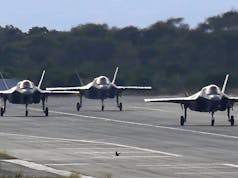
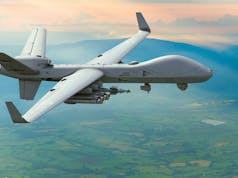
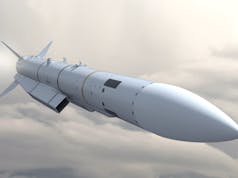

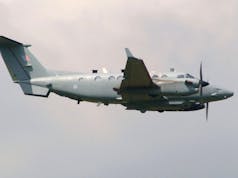

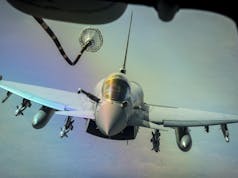




Think they’ll pay by cheque or can they use Apple Pay for this kind of stuff now?
Haha definitely still by cheque, on delivery.
when buying from the US you pay by “check”
When buying from the US you use bank transfer, checks are so last century
cheques Ron
Apologies
Interesting they are buying so much equipment considering the amount of stuff they already have, expecting something to happen in the coming years?
James, perhaps with could get some cheap preowned goods they have finished with…
They are buying influence not military assets.
Just reading from wiki: “Currently, the UAEAF has around 4,000 personnel and operates approximately 538 fixed wing and rotorcraft.” Compare that to the 32000+ personnel the RAF uses to support its 800 or so operational aircraft, makes you wonder just what corners the UAE is cutting in terms of the supporting personnel – how resilient would this theoretically impressive force be in an actual conflict?
Or maybe the RAF numbers are excessive (40 people) for the number of airframes?
Quite possibly, but surely not that excessive? I’d say if it’s somewhere in the middle then it would likely lean towards the first suggestion. My understanding is that Middle Eastern militaries tend to outsource a lot of their more technical training to the West, perhaps they use a lot of civilian contractors for ATC, maintenance, fire, force protection etc.
UAE use way more civil contractors for supply-side and maintenance etc
Good money for it as well
As has been mentioned the UAE uses a large number of contractors of non nationals, the local population/armed forces size isnt really big enough to have sufficient people employed in the roles, plus its probably vastly cheaper to bring in non nationals than pay the wages locals require to work.
Personnel numbers aren’t based on per airframe number. The RAF can deploy it’s aircraft and equipment globally. The UAE can’t. You need X number of Personnel to deploy capabilitys 4000 miles or more from home, and sustain them for many months.
i doubt the UAE has the ability for expeditionary air power, intelligence, ISTAR, strategic airlift, airfield defence/infantry, logistics etc. all of those tie up alot of people. do they have lawyers, dentists, dog handlers?
With 8 C17 on their Books and the same number C130 Airlift shouldn’t be much of a problem,plus they have undertaken Combat Missions over Libya so they can’t be that Green as far as Air Ops go.
800 aircraft, I’m in the RAF and certainly we don’t have 800 !!
Maybe not in usable service but on the books is just short of 800
Good news for F35 production line’s and jobs
At the rate the tories are paying for our f35s the UAE will probably have all 50 before we get 50.
So what ? We’ll get superior versions for less money.
we should have had extra aircraft delivered in 2020, we haven’t. the delivery program is slipping and there is nothing in the press or even this website!
No probably about it, they will.
I’m pretty sure Israel are not happy about this. Although they just recently had a joint meeting and came to an understanding with the UAE. Will Israel let another Arab Nation have similar hardware to them? Will Saudi and perhaps Egypt not be mightily peeved that they have been denied access to the F35? They have always tried to maintain a slightly better technical superiority with their equipment. It will be interesting to see what happens when Biden takes over the Presidency.
Yes, I think Israel will object to the proposed sale, and maybe make some concessions in policy to the US to whittle the shopping list down.
This proposed sale wouldn’t have got this far without at least some approval from Israel. This is considered to be the price to pay for another Brick in the Anti- Iran Alliance Wall that is forming.
That’s another 50 rear fuselages that will be built in the UK, Happy day’s.
Actually that’s about 1/2 of Turkey’s cancelled order. They’ll need to find yet more buyers to handle the difference.
Despite Turkey being kicked out, despite Canada still sitting on their hands (if they do proceed, their procurement will grow from 65 to 88 airframes), and despite the UK dragging the chain on their planned procurement of 138 airframes, there are plenty of customers above and beyond the original ‘partner’ nations planned procurement.
What about Japan? What about Israel? What about South Korea? What about Singapore? What about Poland? And now the UAE?
And potentially you can add the Swiss and Finland too.
I think the F-35 order book looks pretty healthy, now and into the future too, and far more than any other fighter program, current or proposed.
You can pretty much guarantee to add South Korea to the F35 list. They have announced that they will build a light carrier, possibly two. The only fixed wing aircraft that can operate from it are Harrier or F35. Harriers are no longer in production. The South Koreans have already made inquiries about the purchase of F35Bs. The actual reason for the light carriers is not North Korea or even China, but Japan, who are upgrading their Izumo class “helicopter destroyers”. There have been a number of incidents, ships cutting up each other at sea plus the historical context of the occupation.
Actually if you re-read my post I did include South Korea as a current customer. They also recently increased their order from 40-A to 60-A and 20-B, 80 aircraft in total.
Japan was the big mover adding another 105 aircraft to their original order of 42 to a total 147 (105-A and 42-B).
Regardless of Turkey being booted out, the F-35 order book is very healthy.
Srsly, you really think South Korea’s defence budget is for defending against Japan?????
UAE has been spending on a lot of big ticket items recently. Very good equipment but such a variety surely leads to logistic issues? Lots of kit but I wonder if they are able to use it all effectively!
No real need to worry about prolonged combat logistics, any conflict in the region would be short and brutal with most of the damage done in the first week or two.
Exactly the case in Yemen, correct?
Yemen isnt a conflict between nations, its a three way civil war over religion between the Yemen government (with incompetent support by Saudi Arabia), the Houthis (armed by Iran) and ISIS. The Houthis which launched the initial coup are better armed than the Yemen government.
Put Simply the Tragedy in Yemen is yet another Proxy War between Team Sunni versus Team Shia.
That’s some shopping list.
Did they get a discount for buying in bulK 🙂
Meanwhile the UK will be cutting back hugely to pay for the covid UBI madness…
Christmas time for the US defence industry. Very intrigued by all the ASW kit associated with the MQ-9 buy. Didn’t know it could be used in this way. Although very good as a MPA adjunct for maritime surveillance, I wouldn’t have thought it would be a particularly effective platform for ASW.
Me neither but apparently we are both misguided.